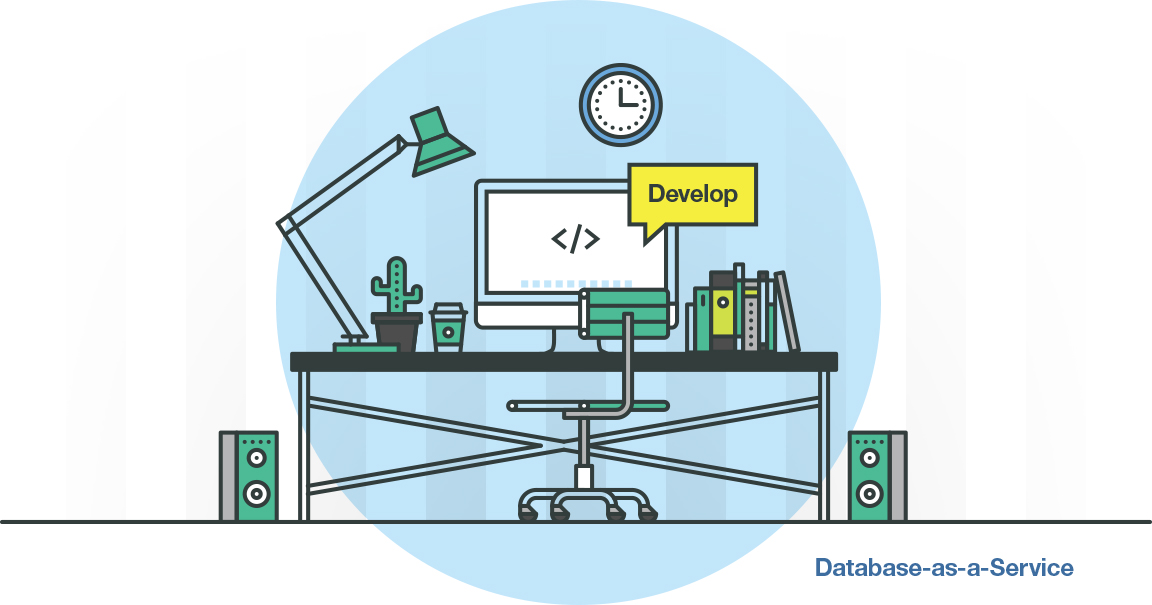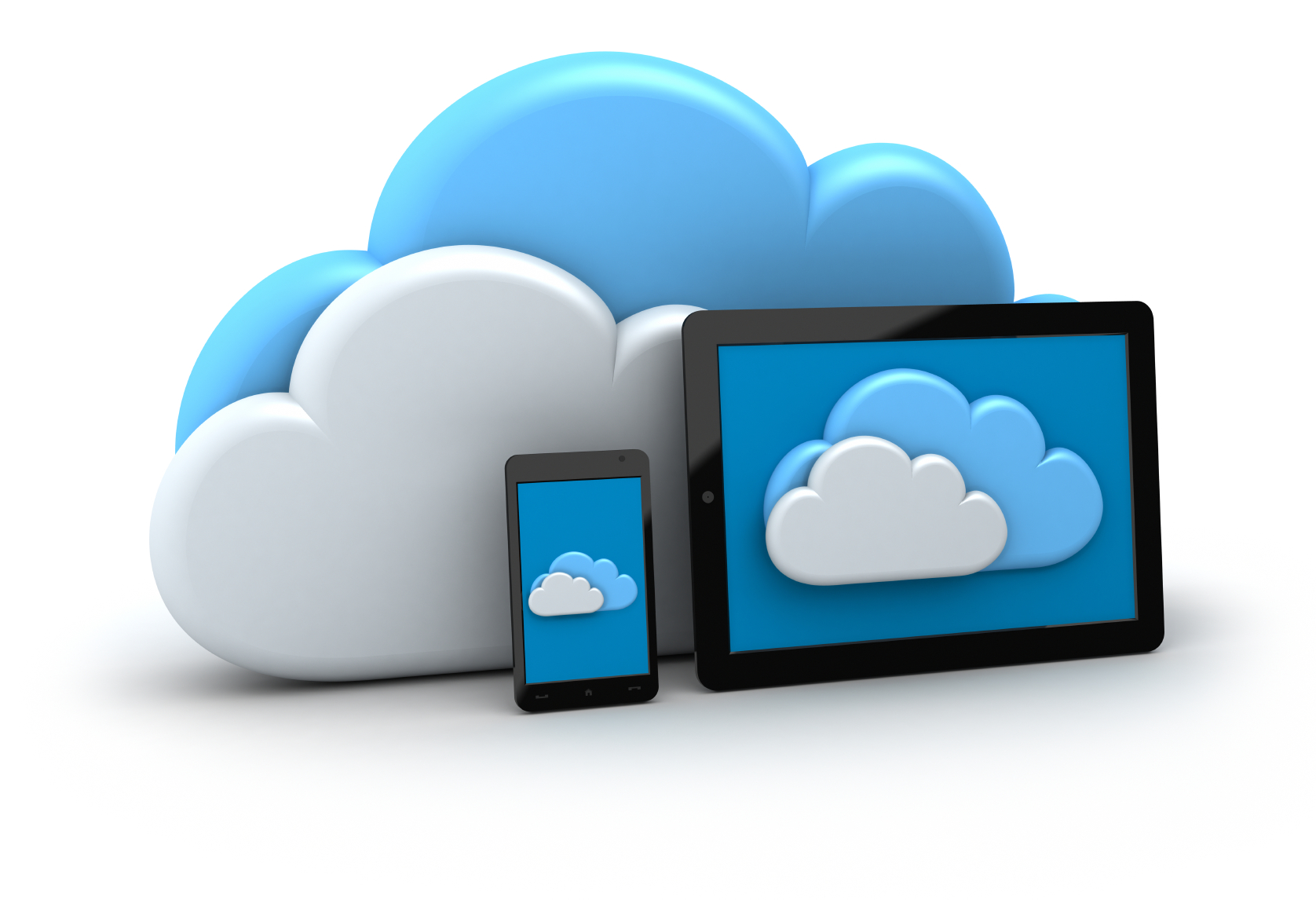PaaS, DBaaS, SaaS ... What does all this mean?

Over the past few years, many new terms have appeared in the English language related to the telecommunications industry. As often happens, these terms gradually migrate to the Russian language. By the nature of our activities, we often come across terms from the "cloud" sphere. And if for us they are clear, then for most users all this is an abbreviation that does not speak of anything.
We often use these terms in our work, and now we offer to once and for all deal with those of them that end in * aaS. By the way, the other day we noticed that some of our partners and clients simply skip these abbreviations in the text, not knowing what it is. Abbreviations of this kind often pass by the attention of people. And absolutely in vain. In order to get the best service for your needs, you should understand the appropriate terminology.
DBaaS (Database as a Service, database as a service

Let's start with this term. Calling him a new language does not dare, because he is already a few years old. But he did not become very common. On the other hand, such services are often offered by cloud service providers, and knowing what DBaaS is is necessary.
')
So, DBaaS is a type of PaaS (about this term below). Using DBaaS, the user can access any type of database on request. The user can quickly deploy the database on any class of equipment in the environment of his chosen software platform (operating system).
The user can select a database, specifying its version, general configuration, a number of other features (for example, location). DB on request can be placed in the OS on a virtual machine or connected within the container.
Over the past couple of years, cloud service providers have significantly increased the number of DBaaS offers. IBM, for example, provides access to a scalable and fully managed database through standard object-oriented APIs.
MWaaS (Middleware as a Service, middleware as a service)

This is also one of the varieties of PaaS. MWaaS is a specialized cloud solution for companies. As part of this service, customers are provided access to a comprehensive platform with the appropriate infrastructure for serving corporate applications and security tools. Using MWaaS, the user can quickly prepare a specific software environment.
One of the elements of MWaaS is the application server. Here it plays the role of a container and load balancing in a cloud infrastructure.
MWaaS includes integrated security features that allow for quick private access to the required cloud applications and databases. Using middleware as a service, users can work with resilient and scalable environments. Plus, companies can transfer their own applications from one public cloud to another, if necessary.
PaaS (platform as a service)

In short, PaaS is one of the ways to provide the client with a ready-made software environment. At the same time, tools are provided for fine-tuning such an environment. The elements of PaaS are hardware, operating system, DBMS, middleware, testing and development tools. Now PaaS is considered as one of the standards for e-commerce.
If necessary, the user can quickly deploy a typical environment for developing and testing their products. Also in a typical environment, you can place backup sites, transfer part of the workloads from a private cloud to a common one and back.
Often, PaaS is used by programmers who work together on different projects. In this case, all or part of the developers get access to a single development environment remotely. Accordingly, they all need a sufficient amount of system resources, as well as collaboration tools.
And PaaS without problems allows you to distribute tasks, monitor and correct errors, work with different versions of the project. Accordingly, in such environments there are tools for messaging and commenting. A single development environment is often half the battle. The project may simply not reach the launch stage without PaaS.
As mentioned above, both DBaaS and MWaaS are part of PaaS — these are usually part of the overall system.
SaaS (software as a service)

An interesting service that has received particularly active development in recent times. SaaS is used by software platform developers with remote access to them. Microsoft Office 365 is an excellent example of SaaS. Microsoft provides, through the SaaS model, clients access to MS Office Suite (Office Web Apps) along with SharePoint Server, Exchange Server and other services and applications.
SaaS usually means there is no need to install a software package (as is the case with a regular Microsoft Office). Accordingly, there is no need to spend money on the installation, updating and maintenance of equipment and programs that run on this equipment. In this case, several users can work with SaaS at once. The fee is usually charged as a subscription fee (in the case of Microsoft Office 365), or based on the volume of transactions. Technical support falls on the shoulders of the SaaS platform developer, no user involvement is required.
The advantages of SaaS before the standard model of working with licensed software are the absence of the need for a one-time payment of the license. Costs in this case can be very substantial. The user can safely work in the environment of the selected software platform without worrying about anything else.
Now the same corporation Microsoft is rumored to be thinking about introducing a new model - the operating system as a service (for Windows 10). But this information is not yet confirmed.
IaaS (infrastructure as a service)

In this case, the service provider leases computing resources. This may be a set of virtual machines, data warehouses, network elements of various types. With IaaS, the user can quickly deploy copies of the OS by launching virtual copies of a number of software packages. In this case, there is no need to deploy your own network infrastructure. Everything you need is provided by the IaaS provider. At the same time, such an environment is almost always flexible and scalable.
Resources that are not used can be released automatically, and with the additional load, new resources are quickly put into service.
IaaS is often used by IT professionals in various fields (banking, telecommunications, etc.). At the same time, the PaaS model is more popular among developers. All of them allow you to save money and not particularly delve into the details of the technical infrastructure of the service provider. The provider also has the responsibility for technical support for its product. This is an update of the hardware platform, the software platform, the addition of new capacities.
There is no doubt that in the near future we will see how all the above mentioned cloud services will actively develop. There is also no doubt that in the near future we will hear about new * aaS. By the way, maybe we have listed not all of them and can you supplement the above information?
Source: https://habr.com/ru/post/310022/
All Articles